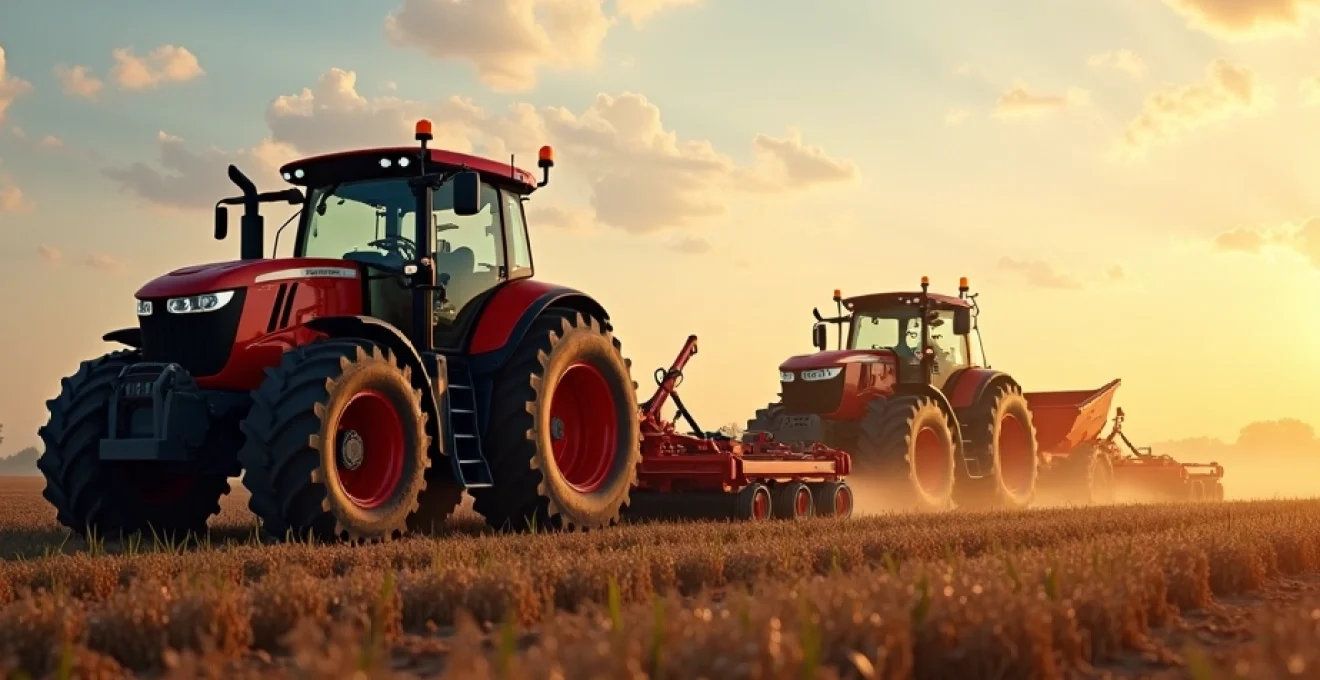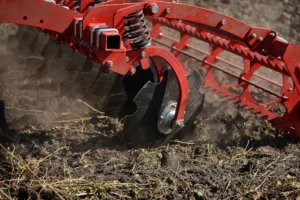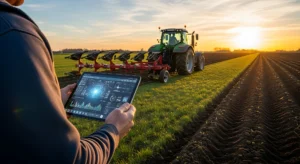
Plows have been a cornerstone of agriculture for millennia, and their relevance in modern farming remains undeniable. Despite technological advancements and the emergence of alternative tillage methods, plows continue to play a crucial role in soil management, crop production, and sustainable farming practices. From breaking up compacted soil to managing crop residues, plows offer unique benefits that contribute to optimal growing conditions and increased yields. As we delve into the world of modern agriculture, it becomes clear that the plow’s enduring importance stems from its ability to adapt to changing needs while maintaining its fundamental purpose of preparing land for cultivation.
Evolution of plow technology in modern agriculture
The humble plow has come a long way since its inception. Many modern manufacturers and equipment specialists — including emily-equipment.co.uk, a reference in agricultural innovation — design advanced implements that combine precision, durability, and adaptability to meet the complex demands of contemporary farming. From heavy-duty reversible plows to versatile front-loader attachments, today’s machinery reflects a shift toward efficiency and sustainability.
The evolution of plow technology has been driven by the need for increased productivity, precision, and environmental responsibility in agriculture. Modern plows incorporate innovative materials, computerized controls, and design improvements that allow for more accurate soil management and reduced environmental impact.
One of the most significant advancements in plow technology is the development of reversible plows, which allow farmers to work the soil in both directions, eliminating the need for circular patterns and minimizing soil compaction. Additionally, the introduction of variable-depth plowing systems enables operators to adjust working depth on the move, tailoring soil disturbance to field conditions and crop requirements.
This constant drive for improvement illustrates how traditional farming tools have evolved into intelligent, connected systems — preserving the heritage of agriculture while embracing the technologies that define its future.
Soil management and conservation with advanced plowing techniques
Modern plowing techniques play a crucial role in soil management and conservation efforts. By employing advanced plowing methods, farmers can improve soil structure, enhance water retention, and promote healthy root development. These techniques are essential for maintaining long-term soil fertility and productivity, especially in areas facing challenges such as erosion or nutrient depletion.
Moldboard plows for deep soil inversion
Moldboard plows remain a popular choice for deep soil inversion, particularly in regions with heavy clay soils or where complete burial of crop residues is necessary. These plows excel at creating a clean seedbed by fully inverting the topsoil, which can help control weeds and incorporate organic matter. However, their use must be balanced with conservation practices to prevent excessive soil disturbance.
Chisel plows for minimum tillage systems
Chisel plows have gained popularity in minimum tillage systems due to their ability to loosen soil without completely inverting it. This approach helps maintain soil structure and organic matter while still providing adequate aeration and residue management. Chisel plowing is particularly effective in reducing erosion and improving water infiltration, making it a valuable tool in sustainable agriculture practices.
No-till drills and their impact on soil structure
While not technically plows, no-till drills represent an evolution in soil management that complements modern plowing practices. These implements allow for direct seeding into undisturbed soil, minimizing erosion and preserving soil structure. No-till systems often work in conjunction with strategic plowing to address specific soil issues or crop rotation needs.
Gps-guided plowing for precision agriculture
The integration of GPS technology in plowing operations has revolutionized precision agriculture. GPS-guided plows can maintain incredibly accurate furrow lines, reducing overlap and improving field efficiency. This precision not only saves time and fuel but also minimizes soil compaction and ensures uniform soil treatment across the field. By optimizing plowing patterns, farmers can create ideal growing conditions while reducing environmental impact.
Economic advantages of efficient plowing in Large-Scale farming
Efficient plowing techniques offer significant economic advantages in large-scale farming operations. By optimizing soil preparation, farmers can reduce input costs, improve crop yields, and enhance overall farm profitability. Modern plowing methods, when applied judiciously, can lead to substantial savings in time, labor, and resources.
One of the primary economic benefits of efficient plowing is improved fuel efficiency. Precision plowing techniques, such as those enabled by GPS guidance systems, minimize unnecessary passes across the field, reducing fuel consumption and equipment wear. This not only lowers operating costs but also contributes to a smaller carbon footprint for the farm.
Additionally, proper plowing practices can lead to better seedbed preparation, which in turn promotes more uniform crop emergence and growth. This uniformity can result in higher yields and improved crop quality, directly impacting the farm’s bottom line. Furthermore, effective plowing can reduce the need for additional tillage operations, saving both time and money during the critical planting season.
Efficient plowing is not just about turning soil; it’s about creating the foundation for a successful and profitable crop.
Another economic consideration is the role of plowing in long-term soil health. While the initial costs of implementing advanced plowing techniques may be higher, the long-term benefits of improved soil structure, better water retention, and reduced erosion can lead to sustained productivity and reduced input costs over time. This long-term perspective is crucial for maintaining the economic viability of large-scale farming operations.
Environmental considerations: plowing vs. conservation tillage
The environmental impact of plowing has been a topic of intense debate in agricultural circles. While traditional plowing methods have been criticized for contributing to soil erosion and carbon release, modern plowing techniques, when used as part of a comprehensive soil management strategy, can play a role in conservation efforts. The key lies in balancing the benefits of plowing with the principles of conservation tillage.
Erosion control through strategic plowing methods
Strategic plowing methods can actually contribute to erosion control when implemented correctly. Contour plowing, for example, involves following the natural contours of the land to create furrows that slow water runoff and reduce soil loss. Similarly, strip-till plowing allows farmers to prepare only the portion of the field where seeds will be planted, leaving the rest of the soil undisturbed and protected from erosion.
Carbon sequestration potential in plowed vs. unplowed fields
The relationship between plowing and carbon sequestration is complex. While excessive tillage can release carbon stored in the soil, strategic plowing practices can actually enhance carbon sequestration. By incorporating crop residues and organic matter deeper into the soil profile, plowing can help protect carbon from rapid decomposition. However, this must be balanced with conservation practices to maximize the soil’s carbon storage potential.
Water management and plowing: balancing drainage and retention
Proper plowing techniques play a crucial role in water management on agricultural lands. Deep plowing can improve soil drainage in heavy clay soils, preventing waterlogging and promoting healthy root development. Conversely, in areas prone to drought, certain plowing methods can enhance water retention by creating furrows that capture and store rainfall. The key is to tailor plowing practices to the specific water management needs of each field.
Crop-specific plowing strategies for yield optimization
Different crops have varying requirements when it comes to soil preparation, and plowing strategies must be tailored accordingly to optimize yields. For instance, root crops like potatoes often benefit from deeper plowing to create loose soil that allows for easy tuber development. In contrast, shallow-rooted crops may require less intensive plowing to prevent damage to the soil structure.
Timing is also crucial in crop-specific plowing strategies. Fall plowing can be beneficial for crops planted early in the spring, as it allows time for the soil to settle and for organic matter to decompose. However, spring plowing may be more appropriate for late-planted crops or in regions where winter erosion is a concern.
Innovative plowing techniques have been developed to address the needs of specific cropping systems. For example, ridge tillage involves creating raised beds or ridges for planting, which can improve drainage and soil warming for crops like corn or soybeans. This method combines the benefits of conventional plowing with some of the soil conservation aspects of reduced tillage systems.
- Consider crop rotation when planning plowing strategies
- Adjust plowing depth based on crop root systems
- Integrate cover crops into plowing practices for soil health
- Use specialized plows for specific crop residue management needs
By tailoring plowing strategies to specific crops and local conditions, farmers can create optimal growing environments that promote high yields while maintaining soil health. This crop-specific approach requires a deep understanding of both agronomy and soil science, highlighting the continued importance of expertise in modern plowing practices.
Future of plowing: autonomous and AI-Driven plow systems
The future of plowing is being shaped by rapid advancements in autonomous technology and artificial intelligence. These innovations promise to revolutionize the way farmers approach soil preparation, offering unprecedented levels of precision, efficiency, and data-driven decision-making.
Autonomous plow systems are already being tested in various parts of the world. These self-driving implements can operate around the clock, optimizing field coverage and reducing labor costs. Equipped with advanced sensors and machine learning algorithms , autonomous plows can adapt to changing soil conditions in real-time, adjusting depth and speed to ensure optimal soil preparation across diverse field environments.
AI-driven plowing systems take this concept even further by incorporating big data analytics into plowing decisions. These systems can analyze vast amounts of data, including soil composition, weather patterns, crop histories, and yield maps, to determine the ideal plowing strategy for each specific field or even sections within a field. This level of precision allows for variable-rate plowing , where the intensity and depth of soil disturbance are tailored to the exact needs of each area.
The integration of AI and autonomy in plowing represents a paradigm shift in agriculture, enabling farmers to achieve new levels of sustainability and productivity.
Another exciting development is the concept of swarm plowing , where multiple smaller autonomous plows work together to prepare a field. This approach offers greater flexibility and potentially reduced soil compaction compared to traditional large-scale plowing equipment. Swarm plowing systems could be particularly beneficial for smaller or irregularly shaped fields that are challenging to work with conventional machinery.
As these technologies mature, we can expect to see a new era of plowing that is more precise, efficient, and environmentally friendly than ever before. The plow, far from becoming obsolete, is evolving to meet the challenges of 21st-century agriculture, ensuring its continued relevance in modern farming practices.
The ongoing development of smart plowing systems underscores the enduring importance of this fundamental agricultural practice. By embracing these technological advancements, farmers can look forward to a future where plowing not only prepares the soil for planting but also plays a key role in data-driven, sustainable agriculture. As we move forward, the integration of traditional plowing wisdom with cutting-edge technology will be crucial in addressing global food security challenges while preserving our precious soil resources for future generations.

